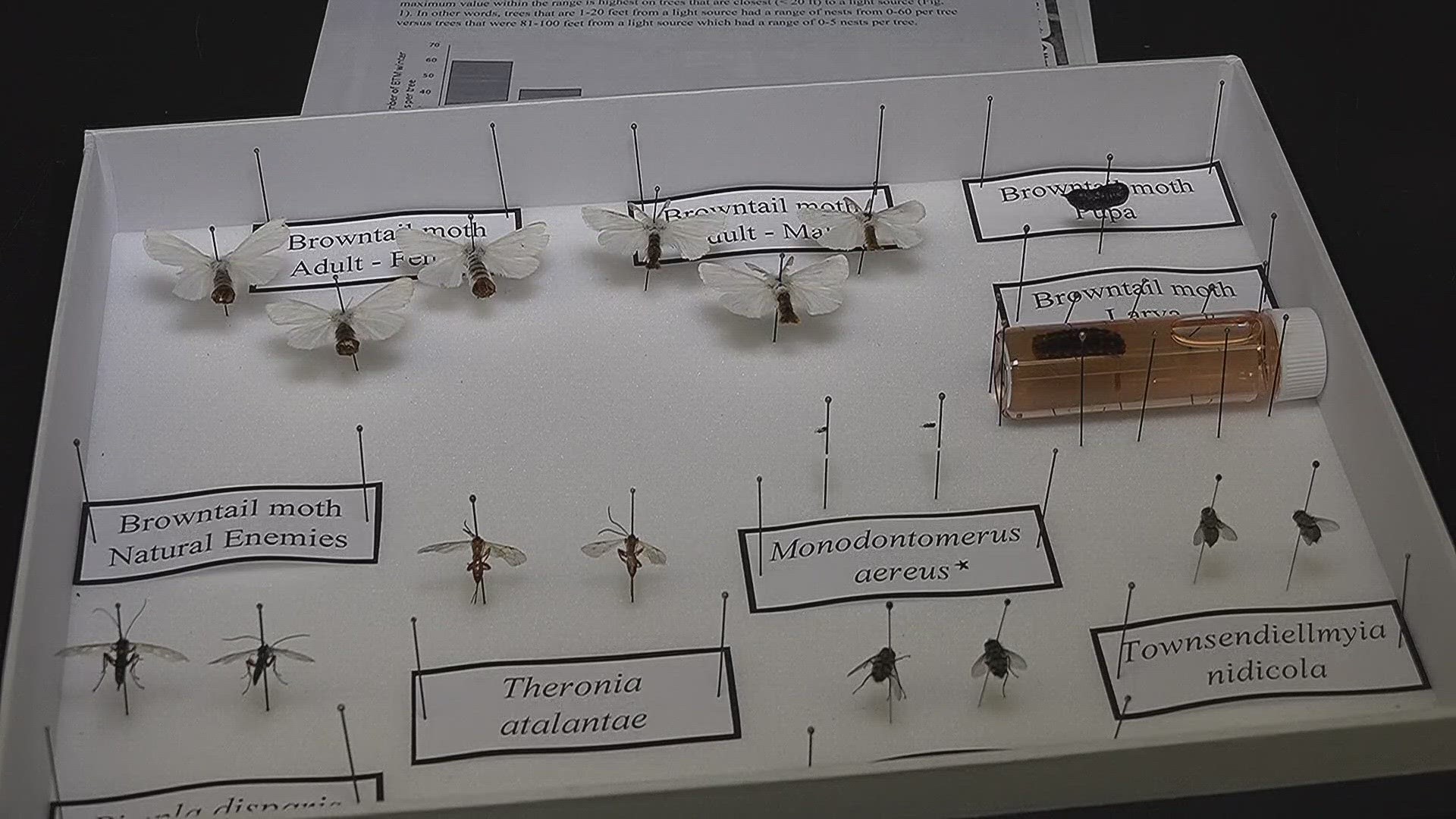AUGUSTA, Maine — The Maine Center for Disease Control and Prevention, Maine Forest Service (MFS), and 211 Maine issued a press release Wednesday to give Mainers tips on ways to limit their exposure to browntail moth caterpillar hairs this fall.
These pesky critters are often found along the coast of Maine and Cape Cod. The MFS said they have found evidence of browntail moths in all 16 counties of Maine, according to the release.
You can easily identify them by their brown body and orange and white spots, accompanied by several fuzzy brown hairs. The caterpillars shed their hairs, which can remain in an area for up to three years, are often released into the air as homeowners dive into their autumn yardwork routines like raking and mowing.
Browntail moth hairs can cause a skin rash akin to poison ivy and if they become airborne, they can cause respiratory distress when inhaled.
Most people affected by the hair develop a localized rash that lasts anywhere from a few hours to several days. Some people may have a severe reaction that leads to a multi-week-long rash. Allergic reactions are typically treated by relieving the existing symptoms and eliminating further exposure, according to the release.
Helpful tips from the Maine DHHS to avoid exposure:
- Avoid places infested by caterpillars. Visit the Interactive Browntail Moth Dashboard to see where MFS notes high activity.
- When performing outdoor activities that may stir up caterpillar hairs:
- Aim for damp days or spray vegetation down with a hose. Moisture helps keep the hairs from becoming airborne.
- Cover your face and any exposed skin by wearing a long-sleeved shirt, long pants, goggles, a respirator/dust mask, a hat, and a disposable coverall.
- Tightly secure your clothing around the neck, wrists, and ankles.
- Avoid using leaf blowers in areas known to have large infestations.
- Take cool showers and change clothes after outdoor activities in infested areas.
- Dry laundry inside to avoid getting hairs on clothing.

